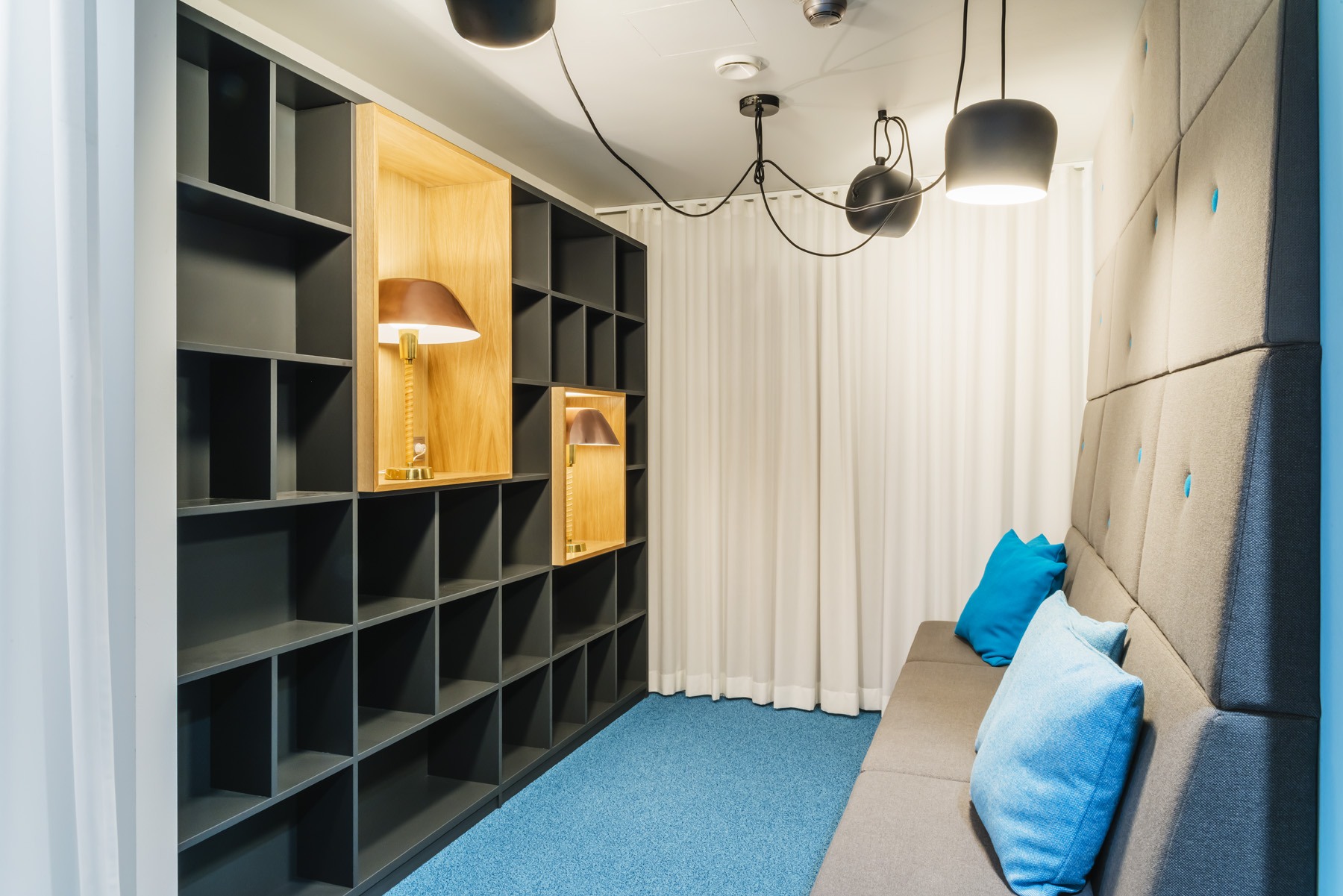Acoustic Glossary
Have you been wondering what absorption means, or what is amplitude? We have pieced together an easy-read acoustic glossary to help you.

Absorb
To bind, tie up. For example, the acoustic material absorbs sound by dampening it.
Absorbent
The substance to which sound is absorbed.
Absorption
Sound absorption into the material.
Absorption area
When the absorption area and volume of the room are known, the approximate reverberation time can be calculated. The absorption area can be calculated by surface area times absorption factor.
Absorption class
Sound absorbing panels are classified in absorption classes A-E according to EN ISO 11654. The damping power is measured at frequencies from 200 to 5000 Hz.
Absorption factor, absorption ratio
The ability of the material to absorb or to tie the sound to itself. The absorption coefficient can be used to calculate reverberation times. When the absorption coefficient of sound absorbing material is at a factor greater than 0.8, the material is defined as good sound attenuator.
Acoustics
Science that examines sound. Sound theory includes all the physical phenomena perceived by human hearing.
Amplitude
The peak sound pressure in the sound wave.
Articulation class (AC)
In open plan offices the acoustic privacy between workstations is expressed in the articulation class (AC). The higher the AC value, the better the privacy is achieved in open spaces. Good privacy requires a minimum AC of 180.
Articulation Index (AI)
Acoustic indicator describing speech intelligibility.
Background noise
A disturbing, non-informative sound that is generated, for example, from air conditioners in the room. High background noise levels can cause harmful long-term effects such as fatigue, nausea, and loss of efficiency and productivity.
Building acoustics
Sound behavior in buildings. Often, building acoustics deals with sound transition from one space to another, or with sound insulation.
Decibel
Sound pressure unit.
Flutter
Quickly repeating echo sound. It occurs when the sound wave proceeds between opposing walls.
Frequency
The unit of vibration and also the sound frequency that indicates the number of vibrations per second. The frequency unit is hertz (Hz). The higher the value, the higher the sound, and the low reading means low sound (treble – bass). The human ear will hear sounds with frequencies in the range of 20 to 20000 Hz. The frequency of human voice is between 125-8000 Hz.
Hall acoustics
The acoustics of large spaces such as concert halls
Noise
No desirable, disturbing sound. Subjective concept.
Porous silencers
Porous attenuators include, for example, mineral wool, foam, and fabricated products. The porous attenuator has a surface through which sound waves pass.
Reflection
Reverse direction of the sound wave or aerial line when it reaches the interface.
Resonance
It arises when the sound is reflected between two opposing walls. Resonances are generated in the length, width and height of the room, i.e. between the end walls, between the side walls and between the floor and the roof.
Reverberation time
Reverberation time is a unit of measurement of echo and noise suppression efficiency. Reverberation time is the time during which the sound pressure level will drop to 60 dB.
Room acoustics
Sound behavior in the room. The main room acoustics indicator is the reverberation time that reflects the echogenicity of the room.
Sound Reduction Index Rw
This is a laboratory measurement that uses information about the relative size of the experimental rooms, the reverberation time in the reception room, the known noise level and the size of the test piece in order to obtain as accurate figure as possible.
Sound Reduction Index R’W
Sound reduction index R’ is a field measurement that attempts to measure the sound reduction index of a material in the actual, finished structure or state of the material (e.g. walls between two rooms).
Sound
Vibration that progresses in a medium and results hearing perception.
Sound attenuation
Sound attenuation means changing the sound energy to a second energy form (mostly heat) as the sound progresses in the medium. Materials and structures that have the ability to change the kinetic energy of sound waves into another energy form are used as sound attenuators. They improve the acoustics of the room by removing the sound wave reflections. Noise level decreases and reverberation time is shortened.
Sound insulation
The ability of a structure to prevent sound from moving from one space to another or through its structure.
Sound pressure
The variation in the atmospheric pressure generated by the sound waves is called sound pressure. The sound pressure level unit is decibel (dB). The lowest sound pressure level we can detect is the hearing threshold (0 dB). Vibrant sounds exceed the pain threshold and cause pain (about 120 dB).
Sound Reduction Class
The sound absorbing plates are classified in the sound reduction classes A-E according to EN ISO 11654. The measurement is performed at frequencies from 200 to 5000 Hz. Class A products have the best damping capability.
Speech separability
Speech separability depends on the background level, reverberation time of the space, and shape of the space.
Speech Transmission Index (STI)
Speech Transmission Index is a key figure that describes the intelligibility of the transmitted speech. It is universally applicable for measuring the impact of different acoustic environments, transmission channels and distractions.
Volume
The synonym for the sound pressure level. The unit is decibel (dB). Measured at different sound frequencies.
Wavelength
The distance between the two peak points of the sound wave. The wavelength of the sounds that can be heard is about 20mm – 20m.
Lähde:
https://www.ecophon.com/fi/akustiikkaratkaisut/akustiikan_tietopankki/
https://www.kotiakustiikka.fi/huoneakustiikka.html
https://fi.wikipedia.org/wiki/%C3%84%C3%A4ni
http://www.cs.tut.fi/sgn/arg/akusem/akuintro.pdf
http://www2.siba.fi/akustiikka/index.php?id=8&la=fi
Kylliäinen, M. and Hongisto, V. (2007). Rakennusten akustinen suunnittelu. Helsinki: Suomen rakennusinsinöörien liitto.
Kylliäinen, M. and Hongisto, V. (2011). Rakennusten akustinen suunnittelu: teollisuustilat. Helsinki: Suomen rakennusinsinöörien liitto.
